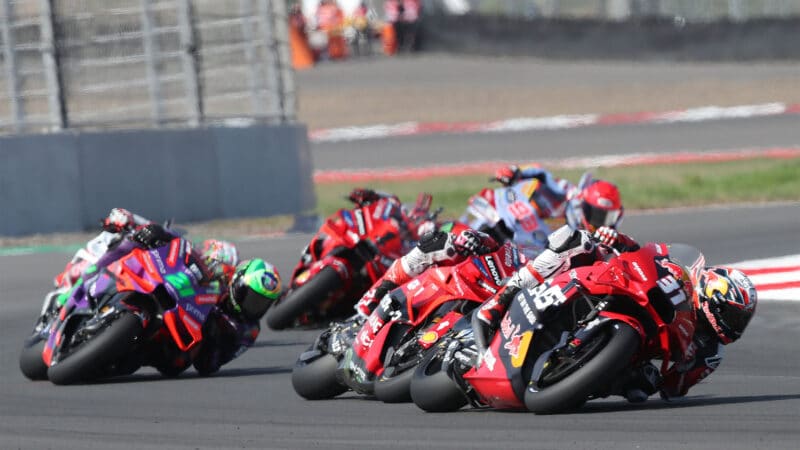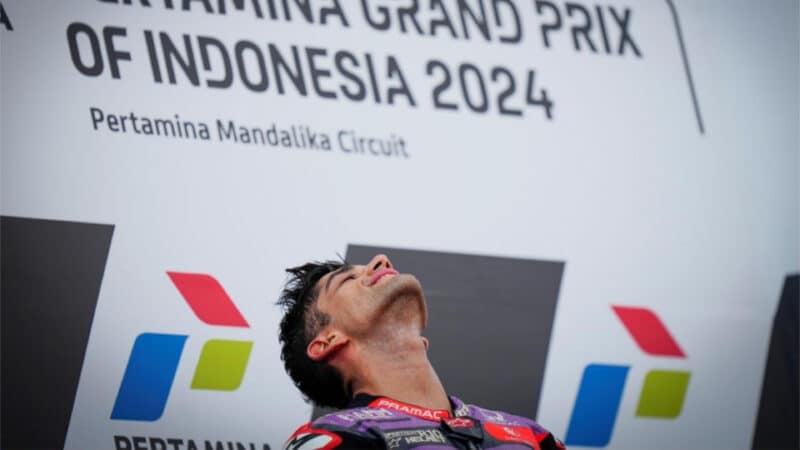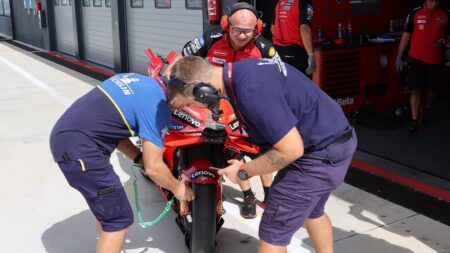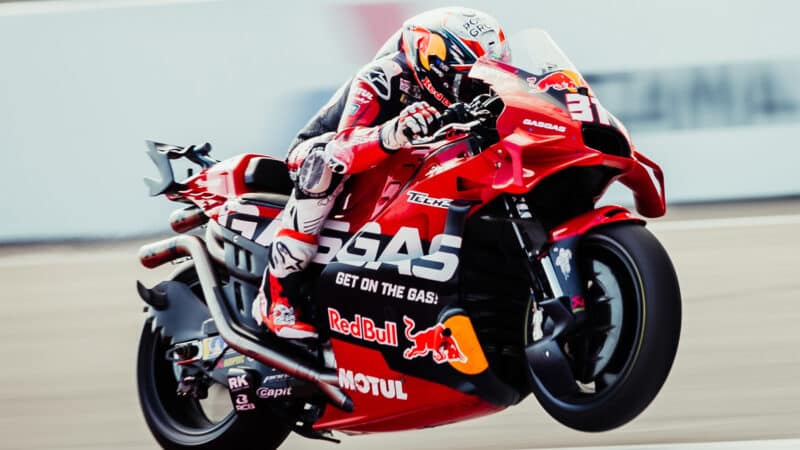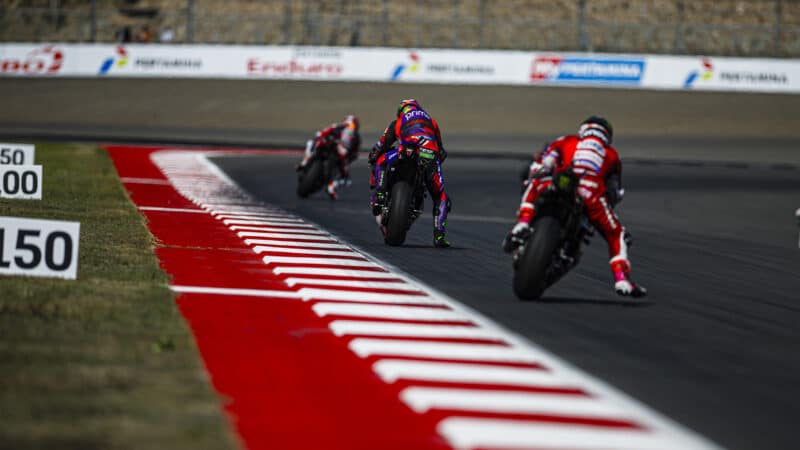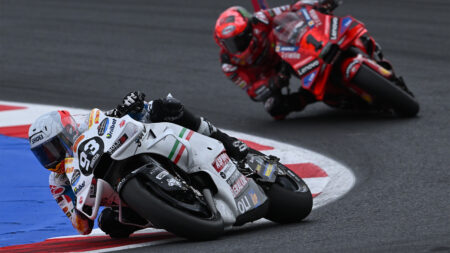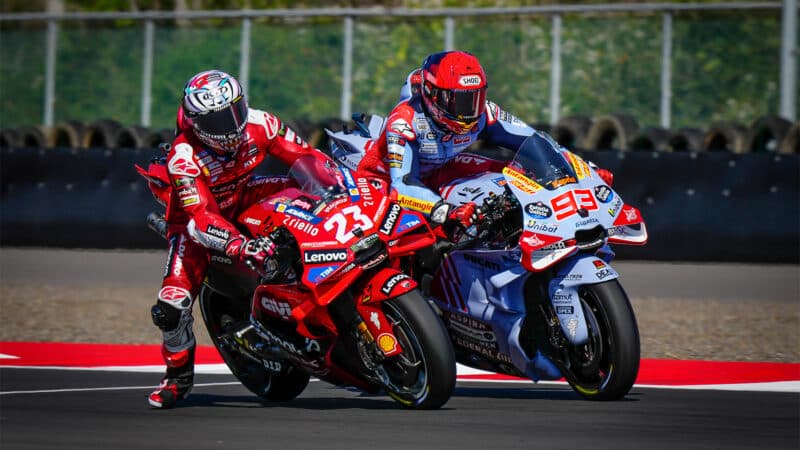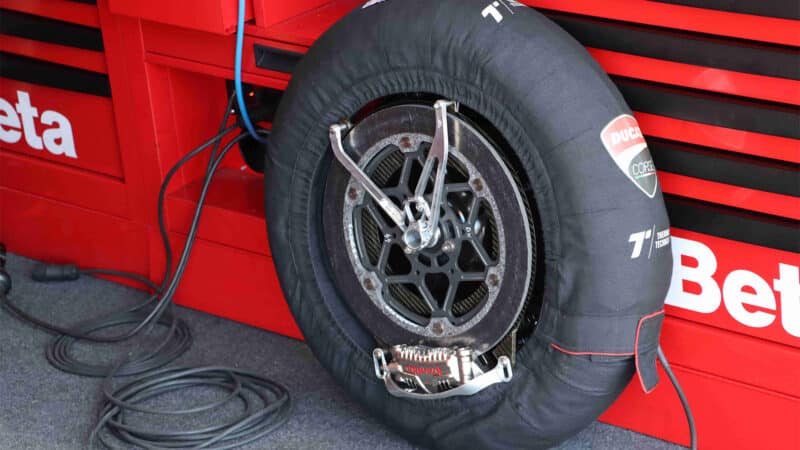“For some reason when you are behind on points and you have to win it’s easier to win,” he said. “When you are in front you have to think too much – it’s not helpful.”
Of course, both men ride Ducati Desmosedici GP24s, but since Misano they are using different aerodynamic packages. Both tried Ducati’s 2024 aero upgrade at last month’s Misano tests. At the Emilia-Romagna GP race-winner Enea Bastianini and runner-up Martin used the new aero, but Bagnaia didn’t. At Mandalika only Martin used it, so the last two GPs have been won with the new aero.
The package includes a revised lower fairing, with larger diffusers – the bulging ducts at the bottom of the fairing. These have large inlets at the top and smaller outlets at the bottom, so they accelerate the air that flows through them. This creates the all-important area of low pressure under the fairing, called ground effect. Nature abhors a vacuum (or partial vacuum), so the higher pressure above the motorcycle presses the tyres into the asphalt, which increases grip.
The upgrade also includes rear-wheel ground-effect devices, to match the front-wheel ground-effect devices used by Ducati for the last year or so. Both these devices do the same thing – they’re designed to be very close and parallel to the road at full lean, so air flow is accelerated beneath them and the asphalt, creating areas of low pressure for more grip.
And, hey presto, you can ride through corners quicker. And the higher the speed the more effective the ground effect, so it’s most useful through fast corners, which is where you can make the most time.
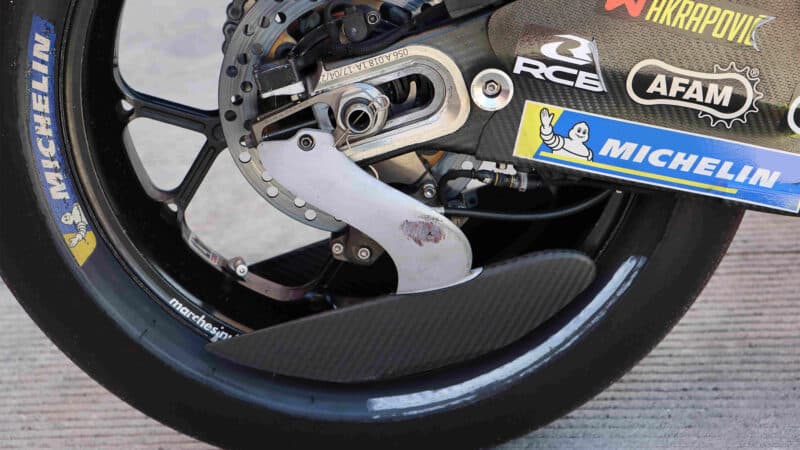
Martin used Ducati’s aero upgrade, which comprised these rear-wheel ground effect devices and revised diffusers in the fairing, all for more grip
By the way, ground effect is different to downforce, which creates more grip via wings that create extra load on the motorcycle and the tyres.
Martin says the new set-up makes him faster, but it’s not all good.
“It feels like the bike turns a bit worse but I feel I can enter corners a bit faster,” he said at Mandalika. “I can go faster into corners, but then I struggle to stop the bike in the last part of braking and I can lose the front a bit more than with this fairing. It’s not about feeling, it’s more about the lap time.”
Maybe this new kit has allowed Martin to regain some of the speed he lost after crashing out of July’s German GP at Sachsenring – his second crash in three weekends. At the next race at Silverstone his engineers used a new geometry setting, which put more weight on the front tyre.
“With this setting maybe I have a bit less performance but I don’t have these crazy crashes anymore,” he said recently (before he slipped off on Saturday).
In other words, Martin is on a highwire, not only when he’s riding, but also when he’s in the garage – the new aero seems to make him fractionally faster but it comes with risks, which is why Bagnaia isn’t using it.
“Jorge uses it for fast corners, but for me it’s worse,” he said. “I feel much better when the bike moves a bit, which gives you feedback. With this aero package you get less movement, and I prefer to feel everything.”
This is one of many areas where race bikes are different to race cars. Cars need to be rigid, bikes don’t, which is why engineers spend so much time playing with the black art of chassis flex. When the bike reacts to an input, a bump, or whatever it needs to move a fraction of a millimetre, which the rider takes as an early warning system. This is why riders always talk about feel and it’s why, for example, upper triple clamps are slotted, to create a tiny amount of flex. If the bike is too rigid the rider gets no warning of impending doom.
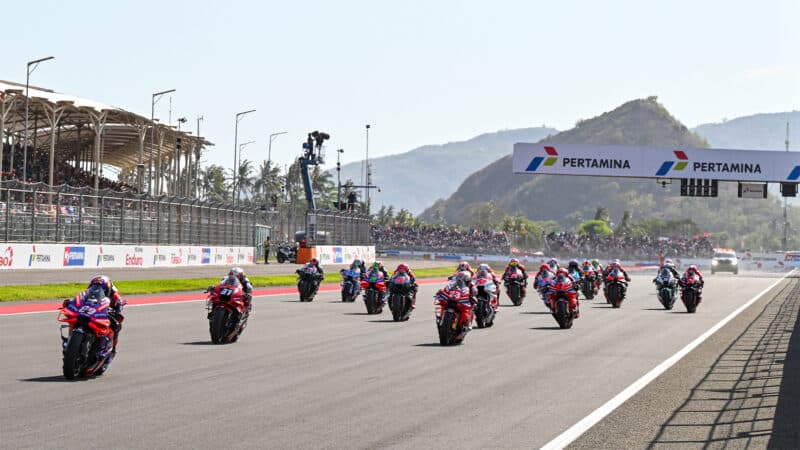
Martin nailed the start from pole and was always in charge, even though Acosta seemed like he might fight for the win at one point
Dorna/MotoGP
Ducati wasn’t the only factory at Mandalika playing with its once-a-year aero upgrade. KTM has had a horrible few months trying to get even close to the Ducatis. At Misano the previous weekend Pedro Acosta and Brad Binder did give chase but they both crashed out trying to keep up.

